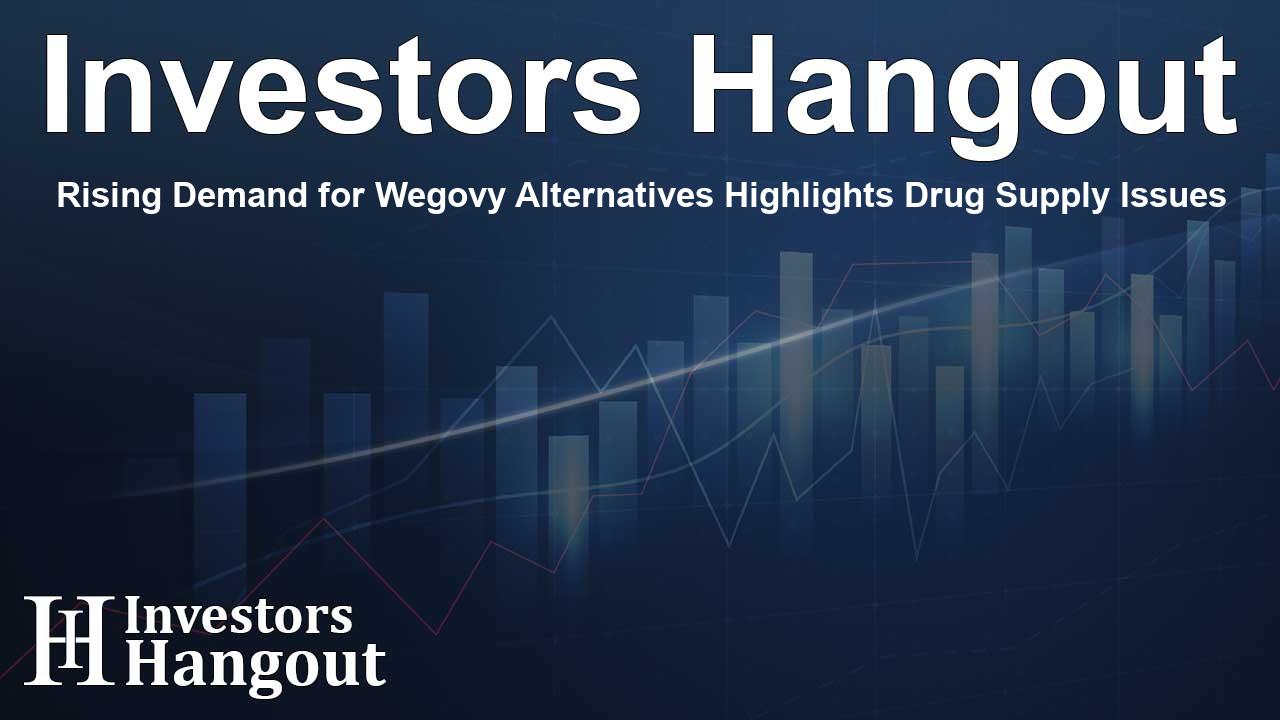Rising Demand for Wegovy Alternatives Highlights Drug Supply Issues

Insight into the Growing Demand for Compounded Wegovy
As the conversation around obesity management continues to evolve, a considerable number of individuals—over 200,000 prescriptions monthly—are turning to compounded alternatives of Novo Nordisk’s weight-loss medication, Wegovy. This transition is largely due to the challenges many face in accessing the original formulation, prompting them to seek often more affordable options provided by pharmacies and telehealth services.
The Role of FDA in the Current Drug Shortage
The U.S. Food and Drug Administration (FDA) is currently evaluating the status of Wegovy on its shortage inventory. This crucial decision could potentially affect the availability of compounded versions that have been filling the gap during the ongoing shortage. Particularly, compounding pharmacies have been allowed to produce customized forms of the medication to meet patient demands for over a year.
Impact on Patients
For many Americans who find the original Wegovy either too expensive or difficult to acquire, compounded versions present a lifeline. These alternatives have reportedly been effective, with studies indicating that Wegovy can assist patients in achieving weight loss of up to 15%. Should the FDA remove Wegovy from its shortage list, it could lead to a decline in the availability of these compounded options, reversing the progress many patients have experienced.
Survey Insights from the Compounding Community
Recent findings from a survey conducted by the Alliance for Pharmacy Compounding reveal that compounded prescriptions play a pivotal role in the current market landscape. The survey, conducted with 200 members, showed that compounded semaglutide constitutes an essential part of meeting demand that the FDA may not fully recognize. With members indicating they dispense between 200 to 42,000 prescriptions monthly, the survey results emphasize the significant scale of this market.
Challenges in Market Estimation
Despite the growing demand, estimating the true size of the compounded semaglutide market remains challenging. Figures from the survey suggest that the market should be seen as more expansive than previously expected, illustrating the extensive reach of compounding pharmacies beyond the initial 28 surveyed outlets. The absence of traditional sales tracking for compounded drugs adds layers of complexity for analysts trying to understand market dynamics.
Novo Nordisk’s Position and Supply Dynamics
Novo Nordisk has reacted proactively to ongoing supply concerns, nearly tripling its U.S. supply of Wegovy this year. Current data indicates that the company sold around 3.2 million prescriptions in a recent four-week span—a significant demand that underscores the essential nature of decisive actions from both the company and the FDA. The organization continues to advocate for proper regulatory measures that ensure patients receive only products that meet standardized efficacy and safety requirements.
Competition in the Semaglutide Market
While Novo Nordisk remains a primary player with its Wegovy brand, it is not alone. Eli Lilly's compounds, including Zepbound and Mounjaro, have also seen high demand, intensifying the conversation about drug shortages in the obesity medication category. The competitive landscape suggests that issues of supply and demand may linger, particularly as various stakeholders advocate for the interests of their respective markets.
Looking Ahead: Regulatory and Market Considerations
The future of Wegovy, compounded alternatives, and the role of regulatory bodies like the FDA is an ongoing dialogue. As evidence mounts regarding patient demand and the implications of regulatory decisions, all eyes will be on how these measures might reshape access to essential medications. The healthcare community’s approach to managing these challenges will likely play a fundamental role in ensuring patients have the medication they need when they need it.
Frequently Asked Questions
What led patients to seek compounded versions of Wegovy?
Many patients found it difficult to access the original Wegovy due to cost and supply issues, leading them to explore more affordable compounded alternatives offered by pharmacies.
How many compounded prescriptions are being filled each month?
Recent estimates suggest over 200,000 compounded prescriptions of semaglutide, indicating a significant demand for these alternatives.
What is the FDA's role concerning Wegovy?
The FDA is currently evaluating whether to remove Wegovy from its shortage list, which may impact the availability of compounded drugs.
How effective is Wegovy for weight loss?
Wegovy has been shown to help patients lose an average of 15% of their body weight, making it a preferred option among weight-loss medications.
What challenges do analysts face in estimating the compounded semaglutide market?
Due to the lack of traditional sales data for compounded drugs and the variability in pharmacy reporting, accurately estimating the size of the compounded semaglutide market poses significant challenges.
About Investors Hangout
Investors Hangout is a leading online stock forum for financial discussion and learning, offering a wide range of free tools and resources. It draws in traders of all levels, who exchange market knowledge, investigate trading tactics, and keep an eye on industry developments in real time. Featuring financial articles, stock message boards, quotes, charts, company profiles, and live news updates. Through cooperative learning and a wealth of informational resources, it helps users from novices creating their first portfolios to experts honing their techniques. Join Investors Hangout today: https://investorshangout.com/
Disclaimer: The content of this article is solely for general informational purposes only; it does not represent legal, financial, or investment advice. Investors Hangout does not offer financial advice; the author is not a licensed financial advisor. Consult a qualified advisor before making any financial or investment decisions based on this article. The author's interpretation of publicly available data shapes the opinions presented here; as a result, they should not be taken as advice to purchase, sell, or hold any securities mentioned or any other investments. The author does not guarantee the accuracy, completeness, or timeliness of any material, providing it "as is." Information and market conditions may change; past performance is not indicative of future outcomes. If any of the material offered here is inaccurate, please contact us for corrections.